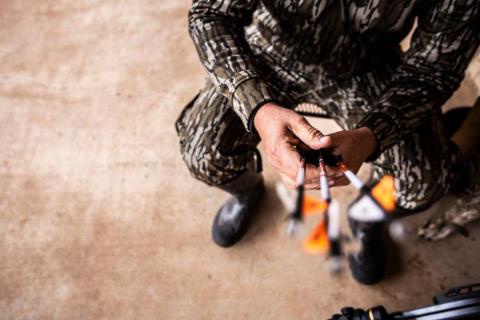By Sam White
On a blustery overcast winter morning in early 1957, four duck hunters met for breakfast at a tiny diner overlooking the only marina in Hatteras, North Carolina, after a morning in the blinds. The conversation turned to fishing as they eagerly awaited the warmer days of spring. It was on that memorable day that Charles Johnson, Luther Hodges, Earl Phillips and Willis Slane laid the groundwork for the creation of the Hatteras Marlin Club in 1959, giving that postage stamp-size coastal village perched on the edge of the Outer Banks the moniker of Blue Marlin Capital of the World.
Boatbuilder and former charter captain Paul Spencer fondly remembers the early days fishing along this part of the Carolina coast with his older brother, who worked with local legend Omie Tillett. Spencer remembers the boats averaged around 40 feet in length, as well as their unique look, in what became known as the Carolina flare: broadly sloping bows, broken shearlines and curvy tumblehomes. Today, this area is home to one of the finest fleets of charter boats anywhere in the world, from places like Pirate’s Cove and the Oregon Inlet Fishing Center down to Hatteras Island, where it all began more than seven decades ago.
What makes these waters so productive? A variety of reasons, but the primary one is due to the turbulent confluence of the cold-water Labrador current pushing down from the north and the warm Gulf Stream, moving like a fast-flowing river up from the southern Caribbean, intersecting just offshore of the Outer Banks. It can make for some rough-and-tumble seas—it is nicknamed the Graveyard of the Atlantic, after all—but the fishing is off the charts. Anglers can target king mackerel and cobia inshore as well as a bevy of pelagics within 25 to 40 miles from the marina: blue marlin, white marlin, sailfish, yellowfin, bluefin, blackfin and bigeye tuna, wahoo, mahimahi, a variety of bottomfish and even swordfish.

January through March usually means bluefin tuna, with the occasional bigeye thrown in for good measure. Even though the bluefin have not returned to the record numbers of past years, they are still a prized target for the commercial fleet and a trophy for the charters in the winter and early spring. As the bluefin return to their northern haunts, the bigeye remain, and the yellowfin begin to show up in greater numbers. By April the big mahimahi will have taken up residence, with many exceeding 30 pounds. Watching a big one erupt from beneath a weed line is an amazing sight which thrills anglers with their speed, ferociousness and beauty. Blue marlin begin to arrive in the early summer with increasing numbers through August, coinciding with the local tournament season. The billfish numbers peak in late August and September, depending on currents as well as the amount of bait available, but double-digit billfish releases are common during this time as is the opportunity for a grand slam with all three species. In fact, the white marlin fishing off this part of North Carolina rivals that of anywhere in the world. It takes a light touch to hook these often-finicky members of the billfish family, but fortunately these crews are well-practiced in the art of dead-bait circle-hook fishing and are able to really rack up the release numbers when the whites are chewing.

Fall sees the return of yellowfin tuna—with smaller but equally tasty blackfin tuna mixed in—but don’t be surprised to see a late-season blue or white marlin, either. As Thanksgiving approaches, yellowfin tuna are the primary target for the charter fleet. Wahoo are also around during this time, with some extra-large models over 50 pounds landed with regularity. Despite the cooler weather the fishing can be red-hot.
Swordfish are a relatively new species for the locals, many of whom have begun to target swords by deep-dropping during the day. Swordfishing tends to begin in the summer and can continue as late as December.
This area of the Outer Banks continues to produce some of the best mates and captains in the world, and there is a high level of cooperation among the charter fleet every day. The captains share information and locations as they find them, and each new day can provide anglers with a unique variety of options depending on species availability. Season after season, there aren’t too many places in the world that can provide the offshore variety, beautiful boats and highly experienced crews as fishing out of North Carolina’s Outer Banks.






























